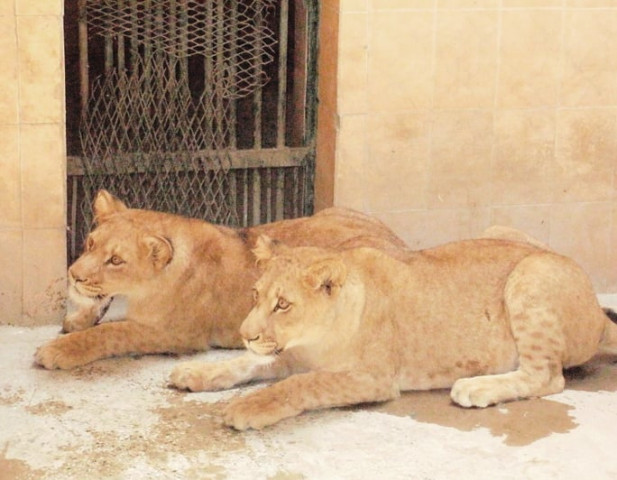Bahawalpur zoo’s mane attraction goes underfed
Ill-kept and uncared-for, the lions at the zoo face challenges to their survival.

Bahawalpur zoo’s mane attraction goes underfed
The Bahawalpur zoo has been a success story for breeding of lions in captivity. The fact that 128 cubs were born there between 1982 and 2010 is a testament to the huge reproductive achievement.
But things are getting murky now. The big cats, including a would-be mother, are being underfed, putting the health of the “king(s) of the jungle” in peril.
Sources told The Express Tribune that only one head of cattle is slaughtered to provide meat to dozens of wild animals, including seven male and female lions and a couple of Bengal tigers, kept at the zoo. Veterinary surgeon Dr Naeem says that on average a lion or tiger needs 10 to 12 kilogrammes of meat a day to stay healthy.
The zoo, officially known as Bahawalpur Zoological Gardens, is spread over 25 acres and is famous for the rearing of lions, tigers, black bears, and birds since its establishment as ‘Sher Bagh’ in 1942 by the Nawab of Bahawalpur.
Zoo visitors complain that the public garden now risks losing its rare distinction (of captive breeding) because of lack of interest by authorities. They point out that animals have been confined to small cages and teasing as a form of entertainment, especially of lions, has become a common pastime for those unsympathetic to the creatures of the wild.
Sources in the zoo say that a black bear couple was also born here and is now 28-years-old.
According to Dr Naeem, a lioness is expected to give birth to baby lions in May or June.
Many of the lions born here have been sold or shifted to other zoos of the country.
A senior citizen Saleem, who has been visiting the zoo for decades, says that once the public garden was very well maintained. But now the authorities do not care much. He laments that since an elephant – the main attraction for children – died in 2002, the administration has not bothered to find a replacement.
However, official sources say that a cut in funding for the upkeep of animals is to blame for the dismal state of affairs.
Another reason for diminishing numbers, according to sources, was the demand placed by the country’s big shots for keeping the “mane attraction”, and the administration had to oblige them.
The zoo has a collection of about 600 birds, including peacocks – some of them rare species – and about 180 mammals. It also houses an aquarium and a zoological museum where a collection of mummified animals is kept.
Published in The Express Tribune, April 24th, 2011.



















COMMENTS
Comments are moderated and generally will be posted if they are on-topic and not abusive.
For more information, please see our Comments FAQ